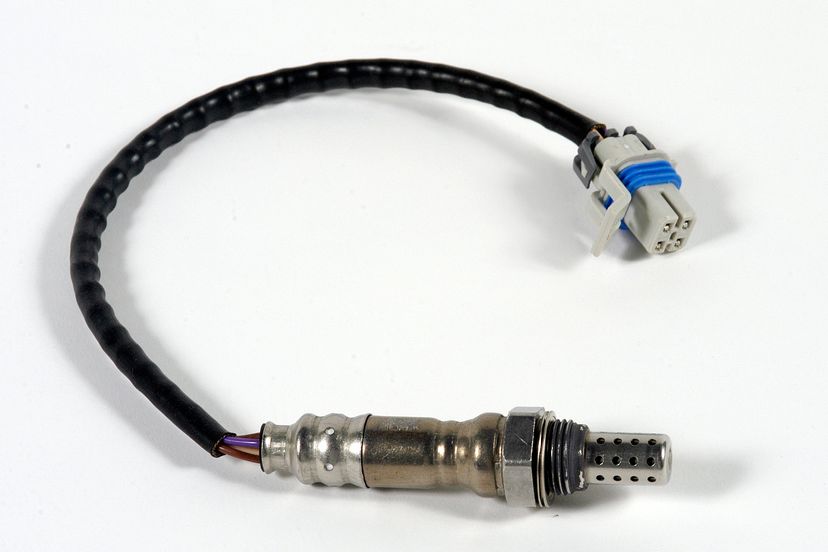Now that we have a basic understanding of how an oxygen sensor works, let's explore the telltale signs of a bad sensor. It's important to note that these symptoms may also be indicative of other issues, so it's crucial to conduct a proper diagnosis before replacing the sensor. Here are the common symptoms to watch out for:
1. Check Engine Light Illuminates
One of the most common signs of a faulty oxygen sensor is an illuminated check engine light on your dashboard. While a check engine light can indicate various problems, a malfunctioning oxygen sensor is a frequent trigger. If you drive a high-mileage vehicle, there's a good chance that the oxygen sensor is to blame. However, it's essential to have a professional diagnose the root cause rather than simply replacing the sensor, as other components may also contribute to the issue.
2. Decreased Fuel Efficiency
A bad oxygen sensor can significantly impact your vehicle's fuel efficiency. If the sensor fails to accurately measure the air-fuel mixture, it may cause the engine to run too rich or too lean. Running rich means there is excess fuel in the mixture, leading to decreased fuel economy. On the other hand, running lean indicates insufficient fuel, which can also result in poor gas mileage. If you notice a sudden decrease in fuel efficiency or consistently lower mileage than usual, it could be a sign of a failing oxygen sensor.
3. Rough Idle and Engine Performance Issues
A faulty oxygen sensor can disrupt essential engine functions, leading to rough idling, poor acceleration, and engine misfires. The sensor plays a crucial role in maintaining the correct air-fuel ratio, timing, and combustion intervals. When it malfunctions, the engine may struggle to perform optimally, resulting in a rough idle and reduced power. If you experience these performance issues along with other symptoms, it's worth considering the oxygen sensor as a potential culprit.
4. Strong Odors from Exhaust
A bad oxygen sensor can cause the engine to run rich, which means there is an excess of unburned fuel in the exhaust. This can lead to strong and unpleasant odors, such as a sulfuric smell or the distinct scent of gasoline. If you notice these smells coming from your exhaust, it's an indication that the oxygen sensor is not accurately measuring the air-fuel mixture, resulting in an improper combustion process.
5. Black Smoke from Exhaust
Another visual symptom of a faulty oxygen sensor is the presence of black smoke coming from the exhaust. When the air-fuel mixture is imbalanced due to a malfunctioning sensor, it can lead to incomplete combustion. The unburned fuel exits the engine as black smoke, indicating a problem with the combustion process. Not only does this contribute to poor fuel efficiency, but it also increases harmful emissions and can potentially damage the catalytic converter.
6. Failed Emissions Test
If your vehicle fails an emissions test, a faulty oxygen sensor is a likely culprit. Oxygen sensors are crucial components of the emissions control system. They help monitor the efficiency of the catalytic converter and ensure the reduction of harmful exhaust gases. A malfunctioning sensor can result in elevated emissions, causing your vehicle to fail the emissions test. If your vehicle does not meet the required emission standards, it's essential to have the oxygen sensor checked and replaced if necessary.
7. Unusual Engine Sounds
A failing oxygen sensor can contribute to unusual engine sounds, such as pinging, knocking, or rattling noises. When the air-fuel mixture is imbalanced, it can lead to carbon buildup in the combustion chamber, resulting in these abnormal sounds. However, it's important to note that these noises can also be caused by other factors, such as clogged fuel injectors or engine damage. Therefore, a thorough diagnosis is necessary to determine the exact cause of the unusual engine sounds.
8. Increased Engine RPM at Idle
If your engine is running at a higher RPM (revolutions per minute) than usual when idling, it could be a sign of a faulty oxygen sensor. A malfunctioning sensor can disrupt the air-fuel mixture, causing the engine to run lean or rich. This imbalance can lead to an increase in engine RPM, indicating that the engine is working harder than necessary even at idle. While this symptom alone is not conclusive evidence of a bad sensor, it should be considered alongside other indicators.
9. Engine Stalling or Misfires
A failing oxygen sensor can result in engine stalling or misfires. When the sensor is unable to provide accurate readings of the air-fuel mixture, it can cause the engine to lose power or misfire. This can be particularly noticeable during acceleration or when starting the engine. If you experience frequent stalling or misfires, it's crucial to have your vehicle inspected to determine the underlying cause, which may include a faulty oxygen sensor.
10. Overheating or Failure of the Catalytic Converter
A bad oxygen sensor can have a detrimental impact on the catalytic converter, which is responsible for converting harmful exhaust gases into less polluting substances. If the oxygen sensor fails to detect the proper air-fuel mixture, it can lead to an excessive amount of unburned fuel entering the catalytic converter. This can cause the converter to overheat, resulting in its failure. Signs of a failing catalytic converter include dark smoke from the exhaust, a sulfur smell, or excessive heat underneath the vehicle. If you suspect a problem with your catalytic converter, it's essential to address it promptly to prevent further damage to your vehicle.
